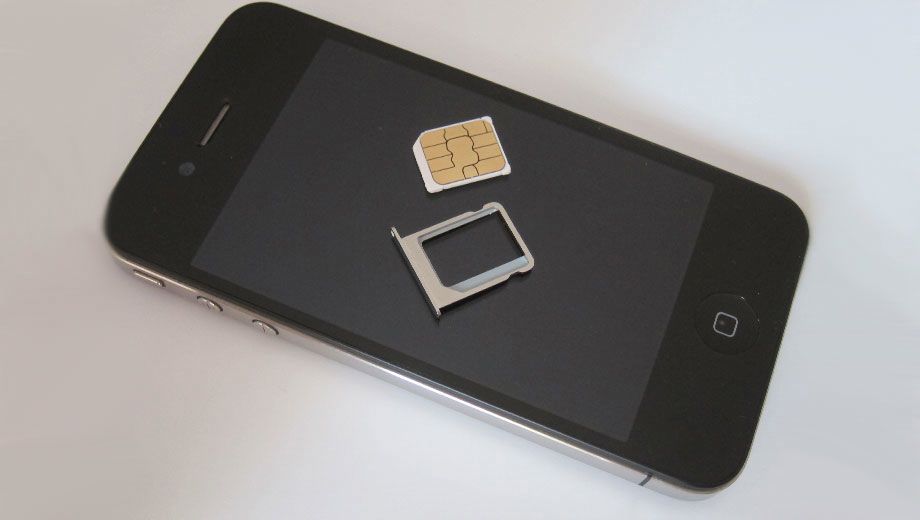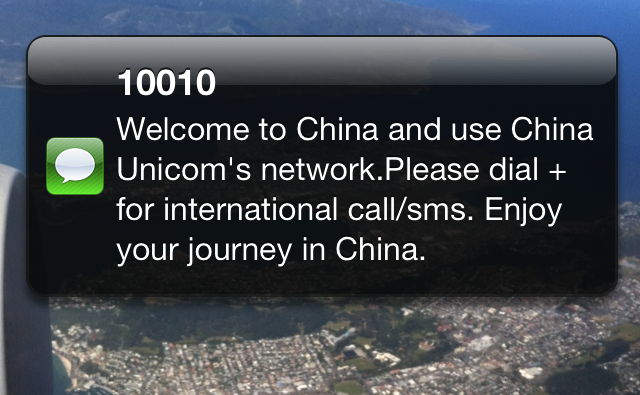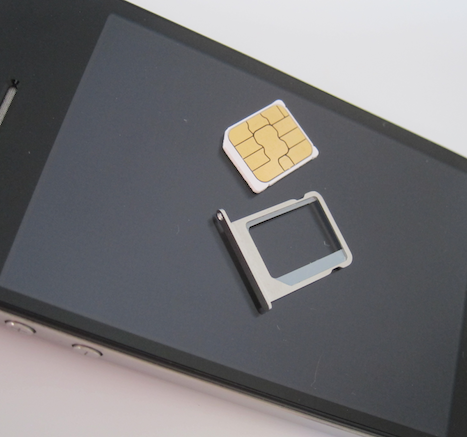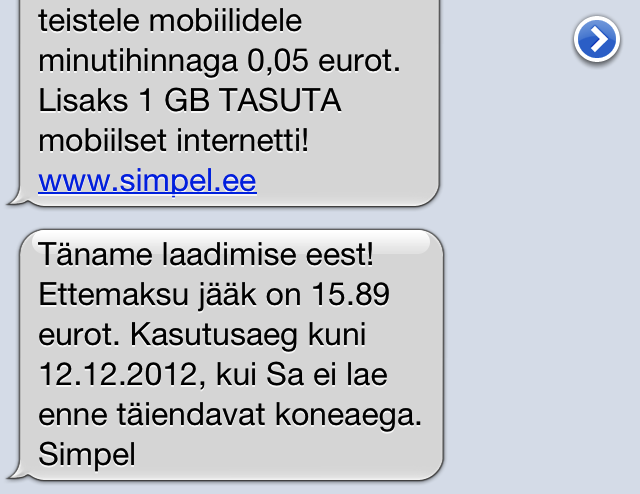Tech guide: how to get a local SIM overseas for your iPhone

If you're travelling abroad for anything more than a day or two, it really pays to have some sort of global roaming solution that's not just using your existing Australian mobile phone network.
Australian networks charge up to $15 per megabyte (MB), and a megabyte is a tiny amount these days -- enough perhaps to check your email or catch up on the news.
But having Internet access on the go is incredibly useful -- for maps, apps, Skype, email, the Internet... everything that it's useful for at home and more.
Fortunately, it's it's really quick and easy to pick up a local SIM card for your iPhone, Android device, iPad or other smartphone. (BlackBerry users beware: the security used for BlackBerry email can make things go slightly wrong.)
Why shouldn't you get a local SIM?
There are a few people for whom it doesn't make sense to get a local SIM.
If you'll be travelling between countries every few days, it may not make sense to take out a local SIM in each country. There are some good regional options as excceptions to this rule, though -- Bridge DataRoam in Asia and the new "Euroaming" deals across Europe.
If your phone is "locked" to your home network, it won't work with any other network's SIM. Many phones sold on a contract and subsidised by the mobile networks are locked -- and the network will charge you to unlock it. Calculate how much you'll be using your phone abroad to figure out if the charge is a good deal.

If you'll need to receive calls and texts on your Australian number, that's not an option if you take out the SIM.
If you need to connect multiple devices, consider a 3G-wifi router, which some people know as mifi devices. They suck down 3G data like a mobile phone and generate their own little wifi field so you can get online. There are several options for renting these, including from rental car companies! We've had great experiences with Tep and Droam 3G-wifi router rentals.
What do you need to do before leaving home?
Make sure the phone is "unlocked". Ask your mobile provider to confirm that you can take the SIM out and it will work with another network's SIM. (Test this with another Australian network's SIM in your phone before leaving the country.)
Record a temporary "I'm abroad, please email me" message for your voicemail. If you want to check in to your voicemail from abroad, there's a phone number and PIN code combination you can call.
Keep your home SIM card safe once you take it out of your phone. I like to tape the SIM card face-down (so the tape is on the plastic side of the SIM, not the metal side) to a business card and tuck it into my travel wallet.
Research telco options in your destination country here on Australian Business Traveller and elsewhere online. Feel free to drop a comment below or get in touch with us on Twitter if you have any questions!
What do I need to do when I arrive at my destination?
Know which network you're looking for, and whether there's a shop at the airport. Many international airports do have telco outlets, but sometimes (as at Singapore) they're in one of the bureaux de change or (as at London) the left luggage office.
Know roughly how much data you'll want to use. This is an inexact science, but for a week's email, social networking, maps, sending a few pictures and a bit of browsing, we tend to guesstimate somewhere over 100MB. Your phone will have a usage function -- reset it, check it after a week and extrapolate from there.
Then, find the shop you're after and ask the staffer to take care of everything for you. You're after a pay-as-you-go SIM card with data.
Make sure you know:
- the phone is working and the Internet's activated
- what the phone number is (consider adding an entry for "Countryname SIM" in your phone book)
- whether you can "tether" it to your laptop, or whether you can use the personal hotspot mode to create your own little wifi network if you want to
- the four digit SIM card PIN code you may need in order to unlock the phone if you restart it
- how much data you have, and how to get more
- how to add credit to the phone if you run out
- what the helpline number is, and how to get through to an English speaking person
- how to swap your Australian SIM back into the phone when you leave
What pitfalls should I avoid?
Don't be stingy on the data. Better to pay $10 over what you think you'll need and not have to worry about whether you'll run out. (You'll agree when trying to add credit using one of those "press 1 for..." menus in a foreign language you don't speak.)
Keep the paperwork handy while you're using the SIM. Often, you'll overlook some crucial detail or code that's required, and it's useful to have the paperwork to refer to.

Don't lose your Australian SIM! Keep it safe somewhere, and know how to swap the SIM back to your Australian one (this'll usually require a paperclip, needle or pin).
Got suggestions for local SIMs? Know a nifty trick that we haven't laid out fully here? Or is there a hidden gem of a service that we've not yet unearthed? Share your thoughts in a comment below!

Qantas - Qantas Frequent Flyer
02 Aug 2011
Total posts 41
I use an iPhone 4S, and most telcos only stock the regular sized sim, I bought a cheap Micro-Sim cutter off eBay to keep when travelling overseas. Much easier to use this on the go (Works just like a hole punch) than try and cut the sim by hand with a pair of scissors.
03 Jan 2011
Total posts 665
I'm not sure if "most" is entirely accurate, but I actually end up using the pair of scissors on my Swiss army knife to trim down SIMs whenever I need to.
Airport phone shops often have a SIM cutter on hand too, which saves a bit of time.
15 Jul 2012
Total posts 1
iPhone's and microsims seem to be everywhere. Don't forget to take your passport with you if you go out shopping cos you'll need the ID. Coverage is everything when you're traveling - I strongly recommend Maxis in Malaysia it was ridiculously cheap and took about five minutes to organize in one of their shops.
16 Aug 2011
Total posts 9
Good solid advice in this article.
An option if you still want to have your Australian mobile number work, but also benefit from a local sim with cheap data, buy a small mobile wifi device (or 3g wifi router as you called it above).
When you get to the new country you can buy the new local sim, and put it in this device, configure it and presto you have a wifi hotspot with you everywhere you go. So you can use your smartphone to connect to this wifi connection for data and use of internet calling (skype, viber, whatsapp etc.) and still have people reach you on your normal mobile number as well.
Small warning through: ask for help configuring teh device in the store you buy the card.
Qantas - Qantas Frequent Flyer
26 Jun 2012
Total posts 58
I always carry a plastic SIM card holder; it holds 5 SIM cards and is the size of a business card. I just switch SIM cards as I go from place to place. Sometimes you need to keep a small balance on the local SIM card and use it at least once every three months to keep it active; a text message outgoing is all it takes and you get to keep the same SIM and, more importantly, the same mobile number.
12 Oct 2013
Total posts 4
I purchased micro sim card for my Iphone from travelsim.com. They have any size you need. I strongly recommend it.
Hi Guest, join in the discussion on Tech guide: how to get a local SIM overseas for your iPhone